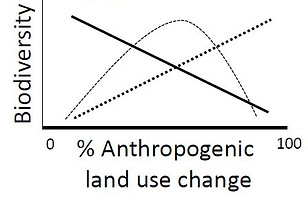Daily and seasonal effects of artificial light at night
Light pollution is increasing in extent and radiance in most areas of the world. Its effects on ecosystems have been studied more in recent years, but we still have limited knowledge about:
1. The extent to which different species are affected
2. What are the long-term consequences
3. How we can mitigate such consequences
These are three main questions that we seek to answer via a recently funded NERC Highlights grant. The project will focus on different 6 different songbird species, but we wish to extend similar work to other avian groups, such as gulls, crows, swifts and owls. It will consist of a field component where birds will be tagged and automatically tracked in different urban and rural areas, to examine the extent to which species of different ecologies are affected by light at night. We will then use lab experiments to test the long-term consequences on the circadian clock, the immune system and the rate of ageing. Last, we will test whether part-night lighting will be an effective strategies to minimise the effects of light pollution on circadian rhythms.
This project is a collaboration with Prof Pat Monaghan and Dr Simon Babayan in Glasgow, and Prof Barbara Helm in Groningen


Trophic food webs in cities
It is known that urbanisation affects ecological communities. However, much less is known about how interspecific interactions such as those between predator and preys are impacted. We are interested to investigate how urbanisation modifies a classic tritrophic interaction between cavity nesting songbirds (blue tits and great tits), their main caterpillar preys and the plants' leaves upon which caterpillars feed. Preliminary work (Pollock et al 2017) has shown that urban blue tits have to rely on alternative diets to feed their offspring, and that this has severe implications for offspring physiology and survival. We are currently expanding this work in two directions.
First, we are investigating the evolutionary physiology of this altered diet, focusing on immunity, digestive enzymes and gut microbiome. This work is in collaboration with Dr Simon Babayan in Glasgow, Dr Maude Baldwin in Seewiesen and Dr Juan Diego Ibanez Alamo in Groningen.
Second, we are studying the implications of the lack of the optimal caterpillar diet in urban areas for the phenology of reproduction in blue tits.


Spatio-temporal responses of biodiversity to urbanisation
Several studies in the last three decades have reported that urbanisation has and still does lead to biotic homogeneisation. This means that urban communities are less diverse, although the abundance of certain urban exploiters can be disproportionally high. However, these analyses were mostly conducted via cross-sectional comparisons of ecological communities surveyed in different cities, or along urban to rural gradients of the same city. Such approach neglects a fundamental aspect of changes in biodiversity due to urbanisation: time! We argue that to fully understand how urbanisation affects biodiversity we need to obtain information on how ecological communities arise and change through time during urban development. This will shed light on how past legacies of land-use affect current levels of biodiversity, as well as on time-lag effects after conversion of natural and rural land into urban areas. This is the main topic of the Master project of Yacob Haddou. We are exploring these questions in collaboration with Dr Rebecca Mancy, Dr Sofie Spatharis and Prof Jason Matthiopolous in Glasgow. We are using bird datasets obtain from the Breeding Bird Survey organised by the British Trust for Ornithology (Dr Gavin Siriwardena). Dr Clare Rowland at the Center for Ecology and Hydrology is collaborating with us on the analyses of land use change maps.



Owl urban ecology
Most of the research conducted on urban animals, and in particular on birds, has focused on diurnal species. We have recently initiated a project on urban Tawny owls (Strix aluco), in collaboration with Prof Barbara Helm (Groningen), Dr Petra Sumasgutner (Cape Town) and the Dave and Katy Anderson at the Forestry Commission Scotland.
20 boxes have been installed in various parks and riparian areas of Glasgow, and we hope to get the first breeding owls in the 2019 spring. We are interested in understanding the breeding and foraging ecology of Tawnies in urban areas and this differs from owls inhabiting rural and forest areas. In particular, we want to focus on hunting strategies and how anthropogenic factors such as light pollution and noise affect their nocturnal movements, hunting strategies and diet. Two Master theses are associated with this project. Freya Coursey is analysing a long term dataset of breeding records from the Loch Lomond area to understand how intra as well as interannual environmental conditions across the National Park can affect the breeding success of Tawnies. Ellen Bird plans to tag owls in the same area, as well as potentially in Glasgow, with GPS tags to undertand the movement ecology of this species in urban and rural areas.


Anthropogenic effects on mussels: microplastics and light pollution
We are interested in assessing anthropogenic threats to costal communities of bivalves, in particular how microplastics, light pollution and a combination of both can impact on the ecosystem services provided by mussels and their circadian behaviour. We are conducting this work via laboratory experiments using blue mussels collected in polluted and unpolluted areas in the West of Scotland. This is part of the PhD project of Eleni Christoforou, who is supervised by Sofie Spatharis and myself.




